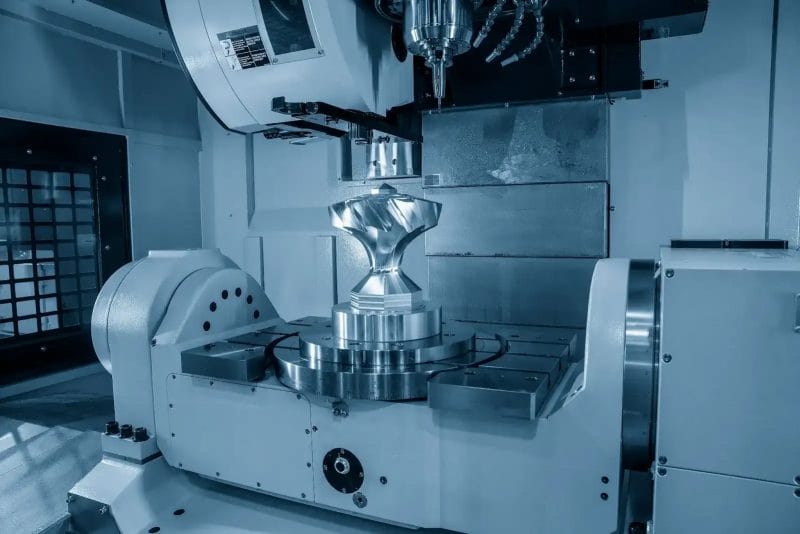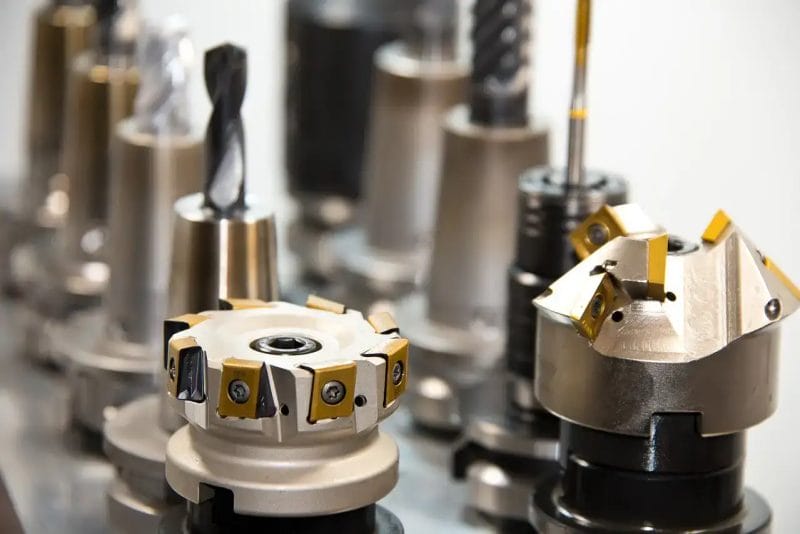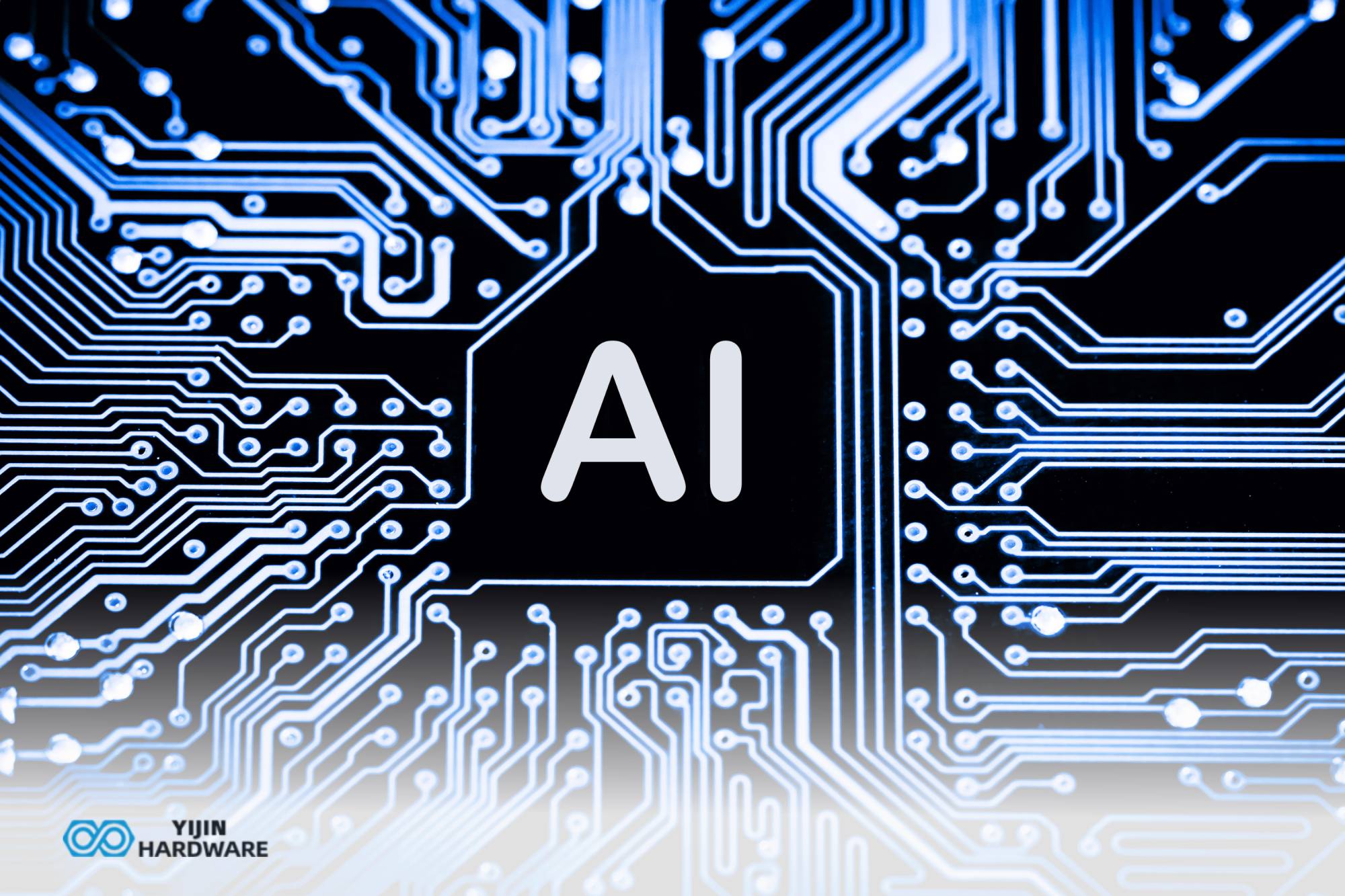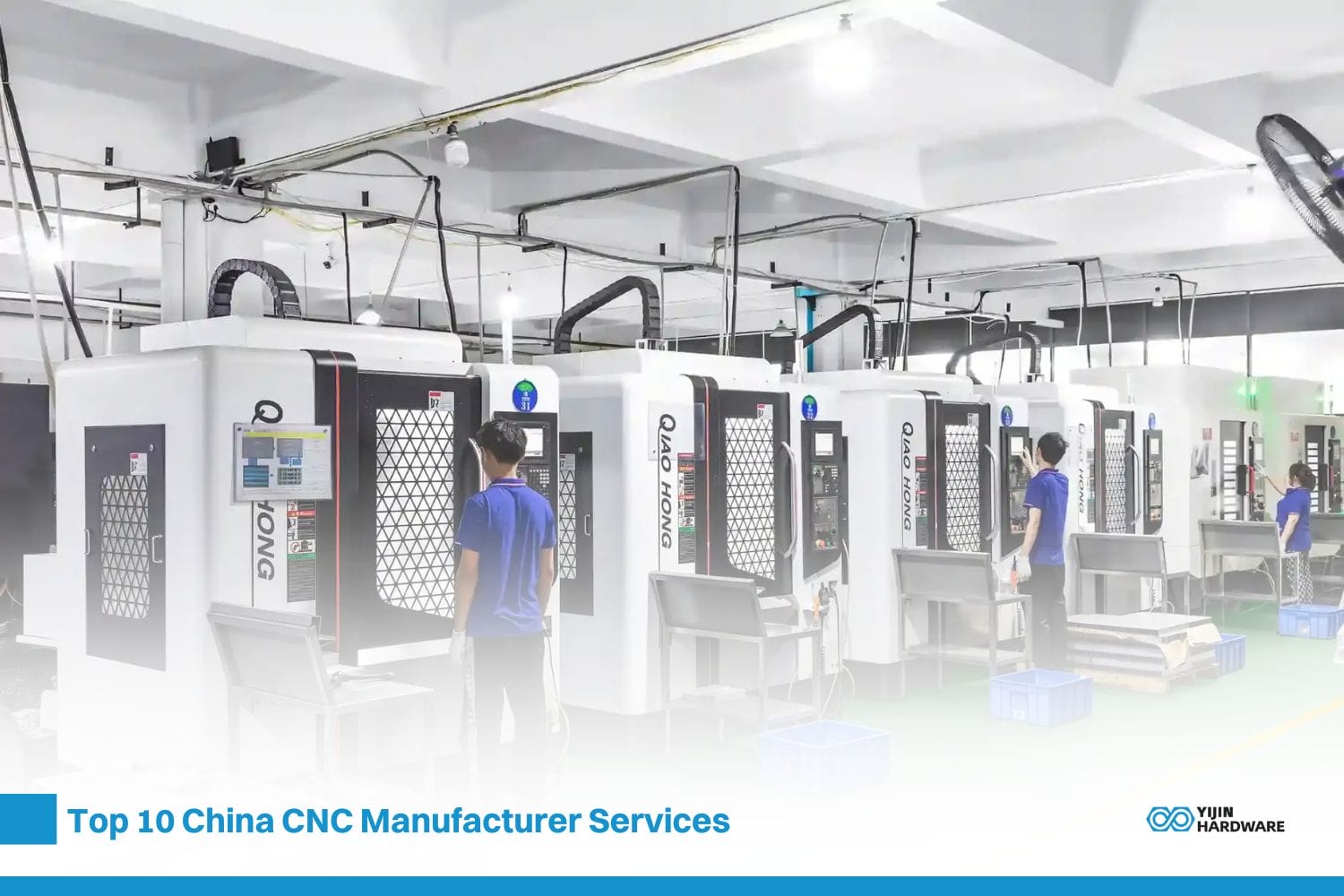
In today’s world, the demand for improved performance from various machines and tools in industries has escalated. To meet this demand multifunctional devices are integrated to function as a unit. This concept is exemplified by the What is a CNC machining centre which acts as a unit for performing the tasks of multiple CNC machines simultaneously. In this article, you will find information on the CNC machining center.
What is a CNC machining Center?
A CNC machining center is a machine tool that combines the functionalities of CNC machines. It can conduct CNC lathe operations, CNC milling tasks and CNC drilling activities concurrently.
Its automatic tool-changing mechanism enables it to employ cutting tools within a setup resulting in high-quality end products, with enhanced accuracy, precision, and smooth surface finishes.
Read More:
How Does a CNC Machining Center Operate?

The operation of a CNC machining center relies on the synchronized functioning of its six components.
Let’s delve into how they work to get a grasp of their mechanisms:
- Key elements.
- CNC systems
- Spindle section
- Additional tools
- Automated tool change system
- Feeding structure
Key Elements
These are the parts of the CNC machining center which include;
- Worktable
- Column
- Bed
Their primary role is to endure the cutting and static loads generated during processing requiring them to provide strength. These components are typically made of welded or cast iron pieces.
CNC Systems
The CNC system, in a CNC machining center mainly consists of the following components;
- Servo drive unit
- Control panel
- PLC ( Logic Controller)
- Numerical control device (NCD)
This system functions as a central control unit, for executing processing operations.
Spindle Section
The spindle area comprises the following components:
The primary components include the motor, spindle, shaft box, resistant belt, and power locks. The spindle section provides space, for cutting tools. Directly facilitates their high-speed rotation.
Auxiliary Devices
Auxiliary devices consist of systems, hydraulic systems, lubrication mechanisms, cooling systems, and detection systems. Although not directly involved in the cutting process these components are crucial for ensuring processing accuracy and efficiency while guaranteeing the production of final products.
The Automatic Tool
It changes the system comprises manipulators and tools. During machining operations requiring tool changes the CNC system issues instructions for the manipulator to extract the tool, from the magazine and place it into the spindle hole.
The Key Elements of the Feed Structure
A component for measuring displacement, a transmission device, and a feed servo motor are utilized to facilitate the movement of the table and spindle in axes during the machining processes. These components also ensure a quiet experience.
When we focus on what is CNC machining center, primarily we focuses on processing workpieces such as plastics and metals. Workpieces are secured in fixtures for machining with cutting performed by tools that remove amounts of material. The machine’s computer is responsible for programming tool speeds and movements. Operators access tools and fixtures through a door.
Different machining centers operate across planes and axes serving purposes like mold cutting or component machining through actions like drilling and tapping. As a result, the parts produced exhibit precision and accuracy with tolerances.
What are the Key Characteristics of a CNC Machining Center?

Some primary features include:
Coolant System, for Managing Fluctuations during Operations.
It assists in keeping things cool thereby preventing overheating automatically. This helps in maintaining the accuracy and durability of the tool. Additionally, the removal of chips keeps the machining environment clean.
Multiple Axis System
These systems primarily consist of a multiple-axis setup, such as a 3 axis system. In this setup cutting tools move along three axes X, Y, and Z. This allows the tool to reach all sides of the workpiece. In CNC machining centers 5-axis or 6-axis systems have been introduced to create intricate geometries.
Read More:
3-Axis vs 5-Axis CNC Machining
A List of 5 Axis CNC Machining Manufacturers In The World
Automation and Safety
CNC machining centers are equipped with automated operations for machining tasks. This eliminates the need for handling of workpieces and tools during machining, ensuring a process without any risks of damage.
Automatic Tool Changes
Following each machining operation cutting tools are automatically switched using a tool changer. This eliminates the need for tool changes. Speeds up production, by creating various products efficiently within a shorter time frame.
What are Some Common Uses of CNC Machining Centers?
CNC machining centers are tools widely employed in settings. They serve functions, including:
1. Large Scale Production
CNC machining centers streamline tasks through automation, making them ideal for mass-producing components.
2. Mold and Die Manufacturing
These machines utilize CNC milling and drilling techniques to create molds and die essential for producing items like rubber products, airplane sheet metal parts, and automotive engines.
3. Fabricating Parts
Due to their precision and accuracy CNC machining centers are favored for crafting components with complex geometries.
What Types of CNC Machining Centers Exist?

Different categories of CNC machining centers include the following:
What is CNC Verticle Machining Center?
Vertical models feature a design with a rectangular worktable and fixed column. They operate using an oriented spindle that cuts from the top of the workpiece. While easy to use they may pose challenges, in removing chips during operations.
What is CNC Horizontal Machining Center?
These machines consist of a worktable, with a column and a spindle oriented horizontally. This setup allows for machining workpieces from an angle, facilitating the removal of chips from the table. They are commonly used for shaping surfaces and milling slots and grooves.
Universal Machining Center
This type of machining center features a spindle that can be oriented both vertically and horizontally controlled by computer programs. It operates on 5 or more axes, enabling a range of milling operations. The machine can work on the sides of the workpiece in one go, streamlining the machining process.
Types Based on Processing Methods
Milling

In milling operations, a rotary cutting tool is used to remove material from the workpiece. This cutting tool is known as a milling cutter, ideal for shaping rough or flat surfaces. In fields CNC milling stands out as a machining method that relies on computerized controls to produce tailor made parts. To kickstart the process a digital representation of the desired part is crafted using CAD software.
Subsequent steps align with this framework. CAM software is utilized to devise toolpaths and instructions, for the CNC machine overseeing feed rate and spindle speed well. These instructions detail the movements of cutting tools across the X, Y and Z axes.
Boring
Boring machines are utilized to enlarge existing holes, in the workpiece through boring processes using single-point cutting tools.
Read More: Types of Maching Processes
Types of Machining Centers Based on the Tool-Changing Method
- Manipulator tool change machining center
- Non-manipulator tool change machining center
Types of Machining Centers Based on Accuracy
Ordinary precision machining center
This type of center offers positioning accuracy of around 10μm, a feed speed rate of 15 25m/min, and a resolution of 1μm.
High-precision machining center
These centers provide positioning accuracy of about 2μm a feed speed rate ranging from 15 to 100m/min and a resolution of 0.1 m.
Precision machining center
These centers come with an accuracy, within ±5μm and resolutions ranging from 2 to 10 μm.
Additionally, there are distinctions based on the number of control axes:
- 3-axis machining center
This type operates by moving the spindle in three directions. X, Y, and Z axis.
- 4-axis machining center
In 4-axis cnc machining process, the cutting tools move along four axes. X, Y, Z, and A axis.
- 5-axis machining center
They involve a cutting tool that moves in five different directions. X, Y, Z, A, and B axes for cutting materials.
- 6-axis machining center
They feature movement in six axes. Including three A, B, C and three linear X, Y, Z axes.
When it comes to types based on workbench number they can be categorized as table machining centers, double table machining centers, and multiple table machining centers.
How Much Does a CNC Machining Center Cost?
As for the cost of CNC machining centers:
| Machine Type | Cost Range |
| Multi-axis/Multi Spindle Lathe | Above $500,000 |
| Entry Level Production HMC | $25,000-$250,000 |
| Professional 3-axis VMC | $150,000-$4000 |
| Professional HMC | $3000-$5000 |
| 3-axis Mill | Above $3000 |
| Entry Level Production VMC | $50-$150 |
The cost of CNC machining varies depending on factors, like brand reputation, size, power, speed, and ruggedness. If these factors are high the cost will automatically go up. The CNC machine center, from known brands with capabilities, tends to be pricier than those from budget brands with fewer functions.
Summing Up
In essence a CNC machining center is a machine tool used for producing parts with features quickly. Its various components collaborate to execute CNC tasks like milling and drilling showcasing machining capabilities due to its standout features. These machining centers, offered at price points are tailored to handle an array of machining tasks effectively making them ideal, for crafting intricate parts with high accuracy and precision.

 info@yijinsolution.com
info@yijinsolution.com (+86) 188-2253-7569
(+86) 188-2253-7569







